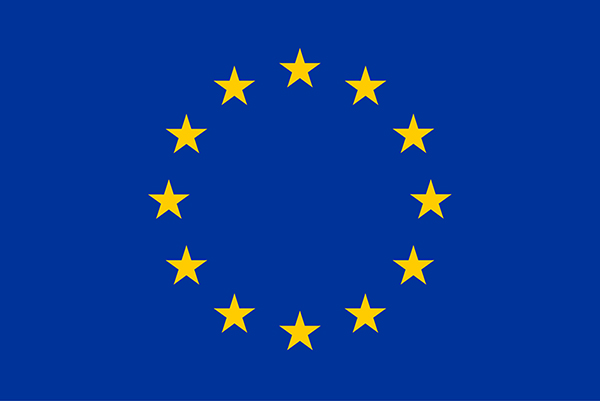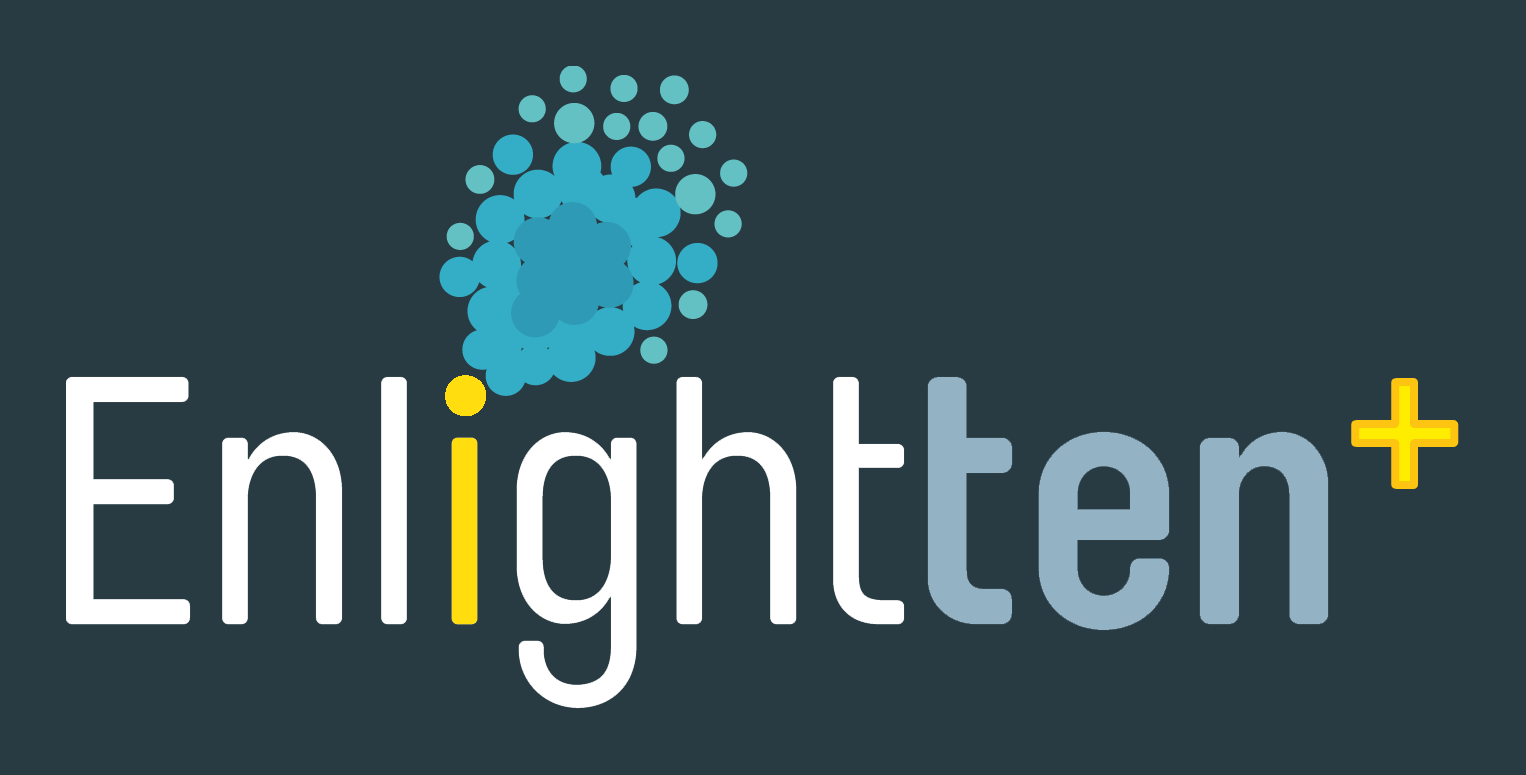Partner organisations
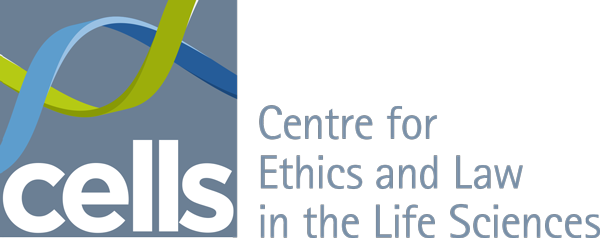 | Gottfried Wilhelm Leibniz Universität Hannover, Germany Centre for Ethics and Law in the Life Sciences |
| Short name: LUH, CELLS Website: www.uni-hannover.de/ | 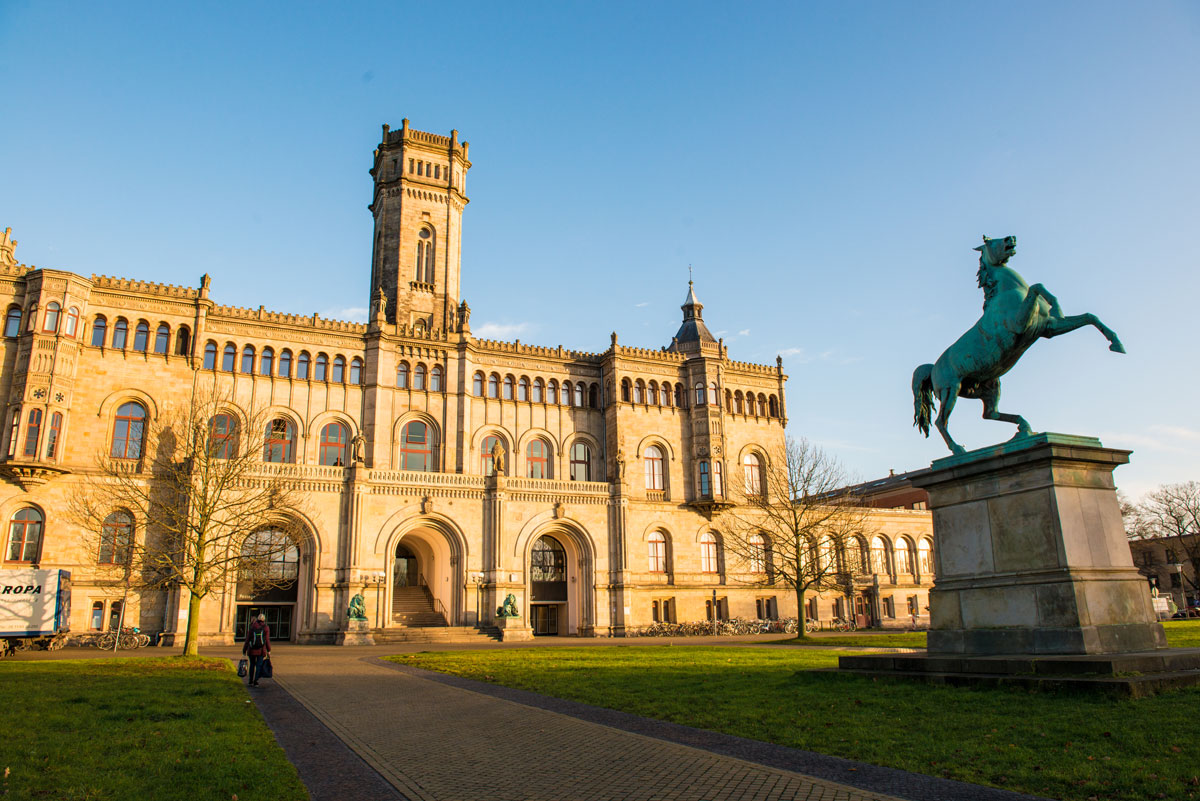 |
The Centre for Ethics and Law in the Life Sciences (CELLS) is an international and interdisciplinary institute at the Faculty of Humanities and Social Sciences of Leibniz University Hannover (LUH). CELLS took up its activities in 2007 as a working group on medical law and bioethics and was later, on 10 September 2008, founded as an autonomous research initiative. CELLS became a Leibniz Research Initiative and was subsequently incorporated as an independent permanent institute within the faculty. The institute has grown consistently and is currently at the forefront of research into the ethical, legal and social implications of the life sciences.
| Department: Centre for Ethics and Law in the Life Sciences (CELLS) E-Mail: nils.hoppe@cells.uni-hannover.de Website Lab: www.cells.uni-hannover.de/nh.html | 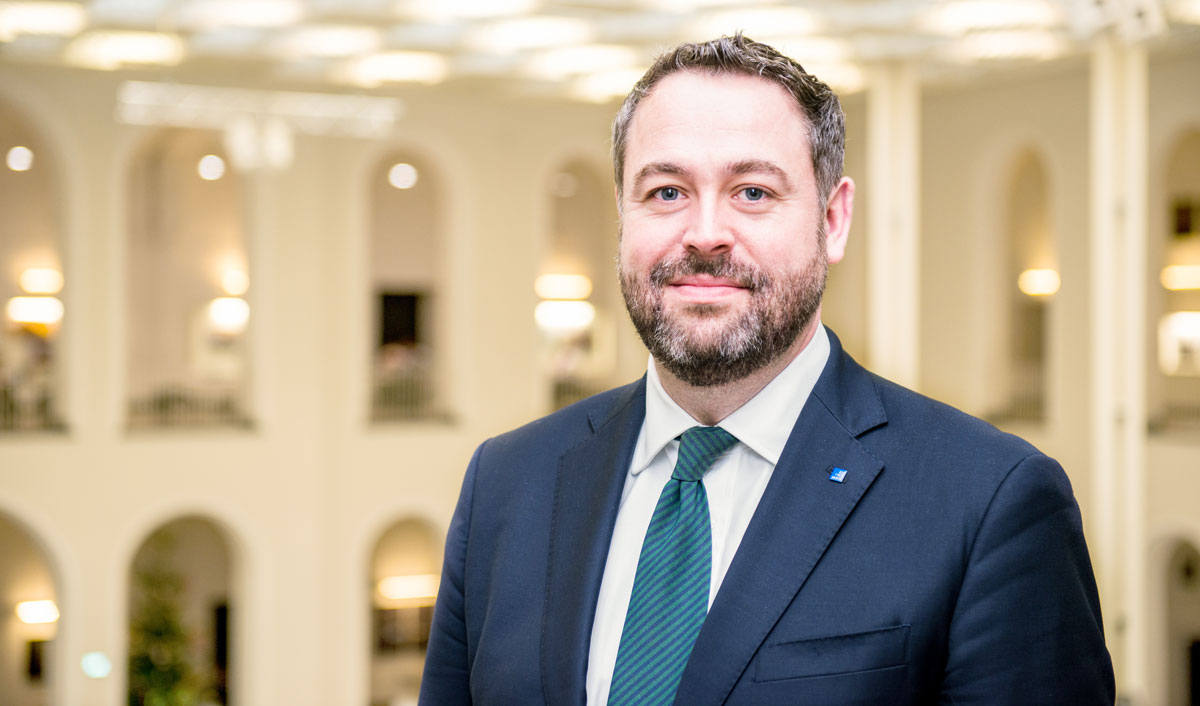 |
 Click for more information
Click for more informationCV
Since 2017: Professor (W2) of Ethics and Law in the Life Sciences; Centre for Ethics and Law in the Life Sciences, Faculty of Humanities and Social Sciences, LUH, Germany
Since 2017: Dean of Research, Faculty of Humanities and Social Sciences, LUH, Hannover, Germany
2011-2017: Professor (W1, W2 tenure track) of Regulation in the Life Sciences; Institute of Philosophy, Faculty of Humanities and Social Sciences, LUH, Germany
2008 – 2011 : Postdoctoral Researcher; Center for Philosophy and Ethics of Science and Institute for Legal Informatics, LUH, Germany
2005 – 2008 : Doctoral studies in law (Dr. iur.), University of Hannover, Germany
2003 – 2004 : Researcher; Dept. for Ethics and History of Medicine, University Medical Center Göttingen, Germany
1999 – 2003 : Various roles as practising lawyer
1996 – 2000 : Undergraduate degree in laws, Nottingham Law School, Nottingham Trent University, UK
Additional information
Editorships-
Since 2016- Editor-in-Chief; Law, Ethics and Economics in Biotechnology, Nomos, Verlagsgesellschaft, Baden-Baden, Germany
Since 2014- Editorial Board Member; Springer Briefs on Ethical and Legal Issues in Biomedicine and Technology, Springer, Germany
Service on Scientific Advisory Boards-
Since 2017- Member of the German Federal Government´s Expert Team on Innovative Health Technologies, Germany
Since 2017- Member of the PHAGO Ethics Advisory Board (Janssen Pharmaceuticals, Johnson & Johnson), Belgium
Since 2015- Chairman of the Advisory Board, Refugee Law Clinic Hannover, Germany
2014 – 2018- Member, UK Biobank Ethics and Governance Council, Wellcome Trust, London, UK
Since 2008- Ethics Expert, Innovative Medicines Initiative, European Commission, Brussels, Belgium
Memberships of Scientific Societies-
Since 2019- Associate Member; Coram Chambers, London, UK
Since 2017- Associate Member; Chartered Institute of Arbitrators, London, UK
Since 2008- European Association of Health Law, Edinburgh, UK
2010 – 2018- Fellow of the Royal Society of Medicine, London, UK
2005 – 2016- Member of the Academy for Ethics in Medicine, Göttingen, Germany
Keywords
- Regenerative medicine
- Human biomaterials
- Genetics and genomics
- Animal experimentation
Key publications
- Erikainen, Hoppe, Sheehan. Public involvement in the governance of population-level biomedical research: unresolved questions and future directions. J Med Eth 2020. doi: 10.1136/medethics-2020-106530. IF: 2.0
- Lanzerath, Illig, Bernemann, Hoppe, Robienski. Humanbiobanken. Karl Alber 2020: Freiburg.
- Harrison, Hoppe, Martin. Gene editing and stem cells. J Cyst Fibros 2018. 17(1):10-16. IF: 4.7
- Hoppe, Miola.Medical Law and Medical Ethics. Cambridge 2014: Cambridge University Press.
- Kaye, Hoppe, Kato. Research Priorities - ELSI 2.0 for Genomics and Society. Science 2012. 336(6082): 673-4. IF: 41.8
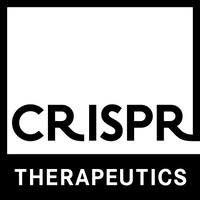 | CRISPR Therapeutics, Cambridge, UK |
| Short name: CRISPR_Tx Website: www.crisprtx.com/ |  |
CRISPR Therapeutics is a leading gene editing company focused on developing transformative gene-based medicines for serious diseases using its proprietary CRISPR/Cas9 platform. CRISPR/Cas9 is a revolutionary gene editing technology that allows for precise, directed changes to genomic DNA. We are rapidly translating our specific, efficient and versatile CRISPR/Cas9 gene-editing platform into therapies to treat hemoglobinopathies, cancer, diabetes and other diseases.
| Department: CRISPR Therapeutics E-Mail: tony.ho@crisprtx.com Website Lab: www.crisprtx.com/about-us/leadership/tony-ho | 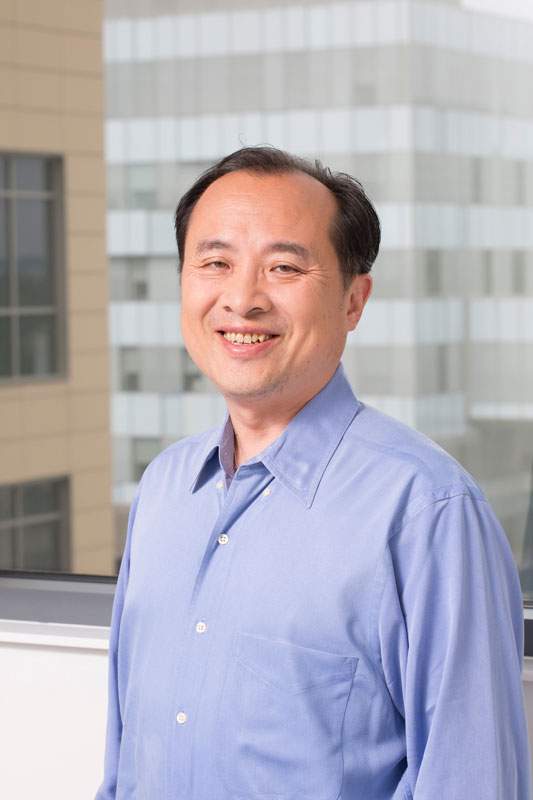 |
 Click for more information
Click for more informationCV
2017-: Present Executive Vice President, Head of Research and Development, CRISPR Therapeutics
2017-2017: Senior Vice President, Oncology Innovation and Integration, AstraZeneca
2015-2017: Global Medicine Leader, Vice President Immuno-Oncology, AstraZeneca
2013-2015: Global Product Vice President/Global Medicine Leader, Olaparib/Lynparza, AstraZeneca
2012-2013: Vice President, Clinical New Opportunities iMED, AstraZeneca
2003-2011: Section Head/Executive Director Neurology and Ophthalmology, Merck & Co.
2000-2003: Chief Scientific Officer, Senior Vice President of Research and Development, Neuronyx
1997-2000: Assistant Professor of Neurology, Johns Hopkins Hospital/University
Additional information
Keywords
- CRISPR editing
- Stem cell biology
- Immuno-oncology
- Hematology
- Diabetes
- Neurology
Key publications
- Ho TW, Mishu B, Li CY, Gao CY, Cornblath DR, Griffin JW, Asbury AK, Blaser MJ, McKhann GM. Guillain-Barré syndrome in northern China. Relationship to Campylobacter jejuni infection and anti-glycolipid antibodies. Brain. 1995 Jun;118 ( Pt 3):597-605. PubMed PMID: 7600081.
- Ho TW, Mannix LK, Fan X, Assaid C, Furtek C, Jones CJ, Lines CR, Rapoport AM; MK-0974 Protocol 004 study group.. Randomized controlled trial of an oral CGRP receptor antagonist, MK-0974, in acute treatment of migraine. Neurology. 2008 Apr 15;70(16):1304-12. Epub 2007 Oct 3. PubMed PMID: 17914062.
- Matulonis UA, Penson RT, Domchek SM, Kaufman B, Shapira-Frommer R, Audeh MW, Kaye S, Molife LR, Gelmon KA, Robertson JD, Mann H, Ho TW, Coleman RL. Olaparib monotherapy in patients with advanced relapsed ovarian cancer and a germline BRCA1/2 mutation: a multistudy analysis of response rates and safety. Ann Oncol. 2016 Jun;27(6):1013-9. doi: 10.1093/annonc/mdw133. Epub 2016 Mar 8. PubMed PMID: 26961146.
- Chaudhari HG, Penterman J, Whitton HJ, Spencer SJ, Flanagan N, Lei Zhang MC, Huang E, Khedkar AS, Toomey JM, Shearer CA, Needham AW, Ho TW, Kulman JD, Cradick TJ, Kernytsky A. Evaluation of Homology-Independent CRISPR-Cas9 Off-Target Assessment Methods. CRISPR J. 2020 Dec;3(6):440-453. doi: 10.1089/crispr.2020.0053. PMID: 33346710; PMCID: PMC7757695.
- Frangoul H, Altshuler D, Cappellini MD, Chen YS, Domm J, Eustace BK, Foell J, de la Fuente J, Grupp S, Handgretinger R, Ho TW, Kattamis A, Kernytsky A, Lekstrom-Himes J, Li AM, Locatelli F, Mapara MY, de Montalembert M, Rondelli D, Sharma A, Sheth S, Soni S, Steinberg MH, Wall D, Yen A, Corbacioglu S. CRISPR-Cas9 Gene Editing for Sickle Cell Disease and β-Thalassemia. N Engl J Med. 2020 Dec 5. doi: 10.1056/NEJMoa2031054. Epub ahead of print. PMID: 33283989.
 | Cultivamos Cultura, São Luis, Odemira, Portugal |
| Short name: CC Website: cultivamoscultura.com |  |
Cultivamos Cultura is a platform for experimentation and development of shared knowledge in the theory and practice of science, technology and contemporary art. Cultivamos Cultura organizes activities in the areas of production, dissemination, research, education and exhibition.
| Department: Cultivamos Cultura E-Mail: marta@martademenezes.com Website Lab: cultivamoscultura.com | 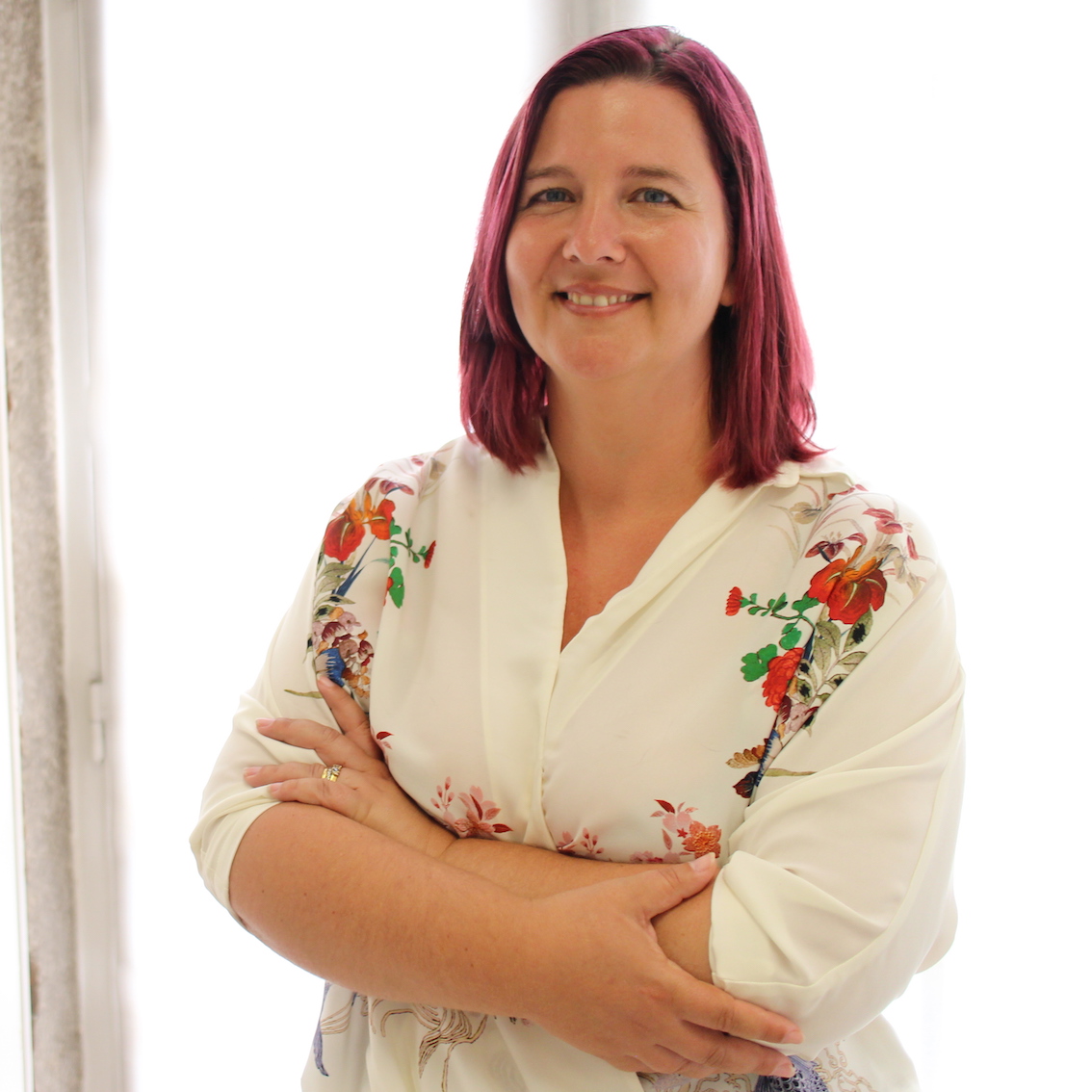 |
 Click for more information
Click for more informationCV
Marta de Menezes is a Portuguese artist (b. Lisbon, 1975) with a degree in Fine Arts by the University in Lisbon, a MSt in History of Art and Visual Culture by the University of Oxford, and a PhD candidate at the University of Leiden. She has been exploring the intersection between Art and Biology, working in research laboratories demonstrating that new biological technologies can be used as new art medium.
In 1999 de Menezes created her first biological artwork (Nature?) by modifying the wing patterns of live butterflies. Since then, she has used diverse biological techniques including functional MRI of the brain to create portraits where the mind can be visualised (Functional Portraits, 2002); fluorescent DNA probes to create micro-sculptures in human cell nuclei (nucleArt, 2002); sculptures made of proteins (Proteic Portrait, 2002-2007), DNA (Innercloud, 2003; The Family, 2004) or incorporating live neurons (Tree of Knowledge, 2005) or bacteria (Decon, 2007). Her work has been presented internationally in exhibitions, articles and lectures. She is currently the artistic director of Ectopia, an experimental art laboratory within a biological research institute – the Instituto Gulbenkian de Ciência – in Lisbon, and Director of Cultivamos Cultura in the South of Portugal.
Additional information
Keywords
- Bioart
- Experimental Art
- Visual Art
Key publications
- Garden São Luis, Cultivamos Cultura @ Ars Electronica 2020, Linz, Austria. Curator: Marta de Menezes.
- Kepler’s Garden Lisbon, FEMeeting @ Ars Electronica 2020, Linz, Austria. Curator: Marta de Menezes.
- Touch Me Festival 2020, Zagreb, Croatia. Curators: Jurij Krpan, Klara Petrović and Luja Simunović (KONTEJNER)
- Extravagant Love Festival 2019, Zagreb, Croatia. Curators: Stahl Stenslie, Klara Petrović and Luja Simunović (KONTEJNER).
- Out oft he Box, Ars Electronica 2019, PostHaus, Linz, Austria. Curator: Gerfried Stocker.
- Synthetica, at the Summerhall for the Edinburgh Science Festival 2018. Co-curated by: Edinburgh International Science Festival, Summerhall and ASCUS Art&Science. United Kingdom
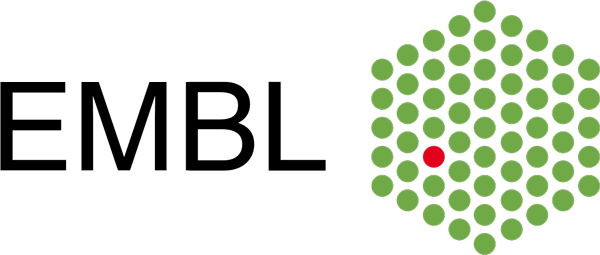 | European Molecular Biology Laboratory - European Bioinformatics Institute, Cambridge, UK |
| Short name: EMBL-EBI Website: www.ebi.ac.uk |  |
At EMBL-EBI, we make the world’s public biological data freely available to the scientific community via a range of services and tools, perform basic research and provide professional training in bioinformatics.
We are part of the European Molecular Biology Laboratory (EMBL), an international, innovative and interdisciplinary research organisation funded by over 20 member states, prospect and associate member states.
We are situated on the Wellcome Genome Campus in Hinxton, Cambridge, UK, one of the world’s largest concentrations of scientific and technical expertise in genomics.
| Department: Training team E-Mail: dayane@ebi.ac.uk Website Lab: www.ebi.ac.uk/training | 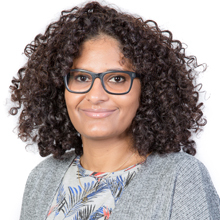 |
 Click for more information
Click for more informationCV
Since 2021: Scientific Training officer, EMBL-EBI
2019 – 2021: Technical Outreach officer, Europe PMC, EMBL-EBI
2013 – 2018: PhD in microbiology, Ludwig Maximilian University of Munich, Germany
2008 – 2010: Master’s degree in molecular biology and cell biology, University Federal de Goiás, Brazil
Additional information
Workshops given
Finding Evidence in Research Publications (2019)
Webinars given
Europe PMC: Programmatic access (2020)
Open with purpose: How and why to make your data open (2020)
Finding the data behind research publications with Europe PMC (2020)
Using Europe PMC for effective literature research (2020)
Searching and browsing scientific publications with the new Europe PMC (2020)
Reproducible Research: Linking publications to curated data resources (2019)
Courses
Keywords
- Training
- Education
- Microbiology
- Synthetic biology
Key publications
- Ferguson C, Araújo D, Faulk L, Gou Y, Hamelers A, Huang Z, Ide-Smith, M, Levchenko M, Marinos N, Nambiar R, Nassar M, Parkin M, Pi X, Rahman F, Rogers F, Roochun Y, Saha S, Selim M, Shafique Z, Sharma S, Stephenson D, Talo F, Thouvenin A, Tirunagari S, Vartak V, Venkatesan A, Yang X, McEntyre J. (2021). Europe PMC in 2020, Nucleic Acids Research, Volume 49, Issue D1, 8 January 2021, Pages D1507–D1514, https://doi.org/10.1093/nar/gkaa994
- Lubiana T, Weber S, Andrade PB, Araújo D, Dorrego-Rivas A, Franzen D, Viçosa GV, Ghosh A, García-Plaza IH (2020). ANN: A platform to annotate text with Wikidata IDs (Version 1). Presented at the eLife Innovation Sprint 2020. http://doi.org/10.5281/zenodo.4279611
- Pinto D, Dürr F, Froriep F, Araújo D, Liu Q, Mascher T. (2019) Extracytoplasmic Function σ Factors Can Be Implemented as Robust Heterologous Genetic Switches in Bacillus subtilis. iScience,13 (380-390). doi:10.1016/j.isci.2019.03.001
 | European Academy of Science Film, Vienna, Austria |
| Short name: EURASF Website: www.eurasf.com | 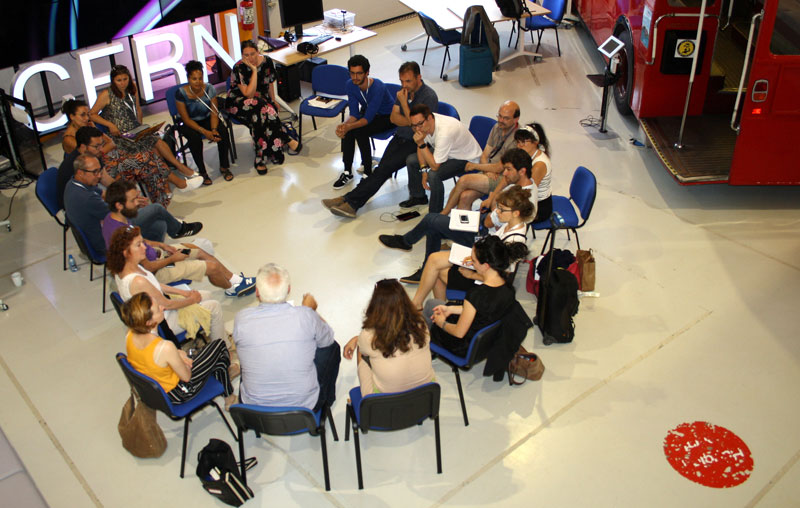 |
The European Academy of Science Film is a network of science related film festivals, digital platforms and individual members from 13 European countries.
EURASF is committed to strengthening the importance of the European Science Film and to connecting it to larger audiences globally. To this end, the association offers a creative forum building bridges between the film industry, the scientific communities and the public.
The aim is to nurture curated content, new forms and new talents as well as to enhance the circulation of finished films and the visibility of European film initiatives and capacities.
| Department: E-Mail: haberl@eurasf.com Website Lab: www.eurasf.com | 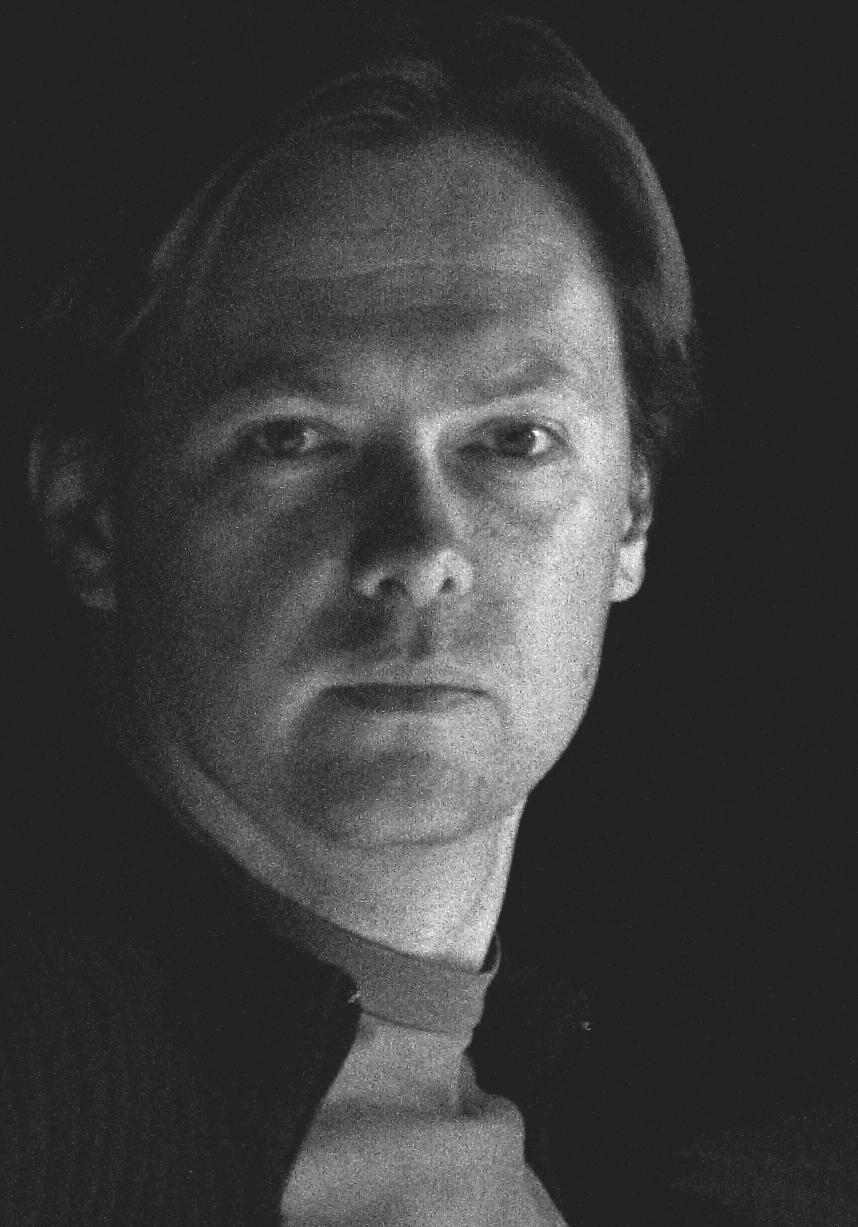 |
 Click for more information
Click for more informationCV
Since 2015: Chair of the European Academy of Science Film (EURASF)
Since 2014: Teacher at the WMS Loquaiplatz (Middle school with a media focus)
2007 – 2018: Head of the European Science Film Festival (sf²)
2007 – 2010: Educational Supervisor and Director of the filmcollege Vienna
Since 2005: Owner of hablo KG (film production)
1993 – 2005: Several functions in Austrian TV and movie productions
Additional information
Member of the Austrian Film Academy
Member of the Drehbuchverband Austria
Member of the Vienna Drehbuchforum
2006- 3rd Prize for Science Communication from the Austrian Science Fund for the film “Quantenfußball”
1994- Screenplay Award of the City of Salzburg, 1994
 | Hycult Biotech, Uden, The Netherlands |
| Short name: HB Website: www.hycultbiotech.com |  |
Hycult Biotechology (HB) is a world-class manufacturer of research reagents, in the field of immunity and has extensive knowledge in development and production of assays, antibodies and proteins. HB’s areas of expertise include, but are not limited to, (monoclonal) antibody generation and production, ELISA development, tissue culture and molecular biology
| Department: R&D Department, Hycult Biotech E-Mail: e.toonen@hycultbiotech.com Website Lab: www.hycultbiotech.com | 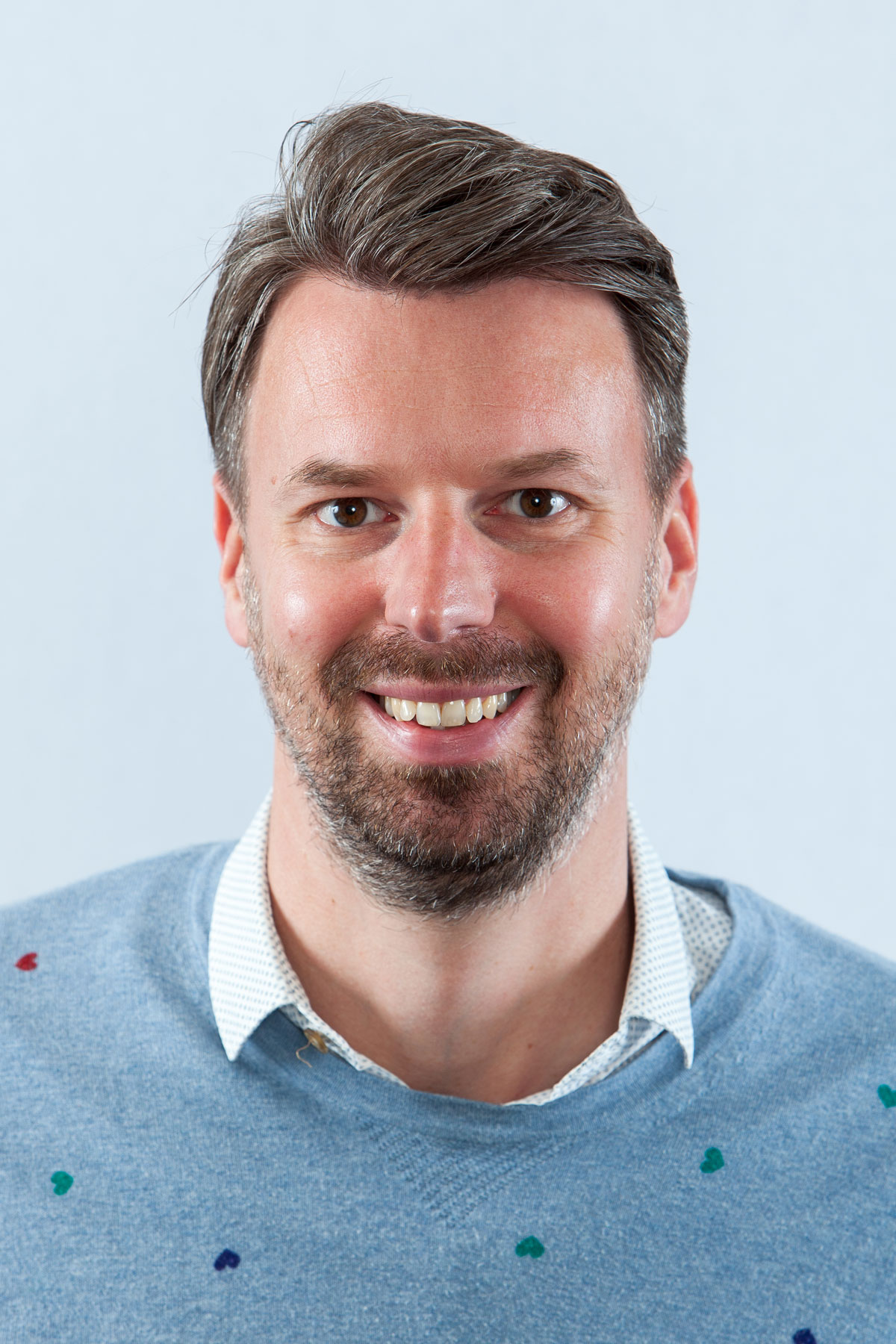 |
 Click for more information
Click for more informationCV
Since 2019: Seniors Scientist/Project Leader, R&D Department, Hycult Biotech, Uden, The Netherlands
2015 – 2019: Scientist/Project Leader, R&D Department, Hycult Biotech, Uden, The Netherlands
2012 – 2015: Postdoc at Department of Experimental Internal Medicine, Radboud University Medical Center, Nijmegen, The Netherlands
2009 – 2012: Postdoc at the Department of Immune Therapeutics, MSD, Oss, The Netherlands
2004 – 2009: PhD student, Department of Human Genetics, Radboud University Medical Center, Nijmegen, The Netherlands
Additional information
2021 – 2025- Work package leader; SciFiMed; SCreening of InFlammation to enable personalIzed MEDicine (EU H2020-FETOPEN-2018-2020) (www.scifimed.eu).
2016 – 2020- Consortium leader Health-i-care; EU Interreg project: Development of a diagnostic test for detection of EHEC infections (www.health-i-care.eu')
2015 – 2020 - Member of the steering committee (SC), member of the Innovation and Exploitation Advisory Panel (IEAP) and Work package leader; RELENT; RELapses prevENTion in chronic autoimmune disease), EU H2020-PHC-2015 RELENT (www.relent.eu).
2015 – 2017- Consortium leader EU Operationeel Programma EFRO Zuid-Nederland (EFRO- OPZuid): A new biomarker for the diagnosis of Rheumatic diseases
2014 - 2017- Local PI/Scientist; DIREKT; Disarming the intravascular innate immune response to improve treatment modalities for chronic kidney disease, EU FP7 (www.kidneydirekt.org)
2014- Personal EKFS Research Grant, Else Kröner-Fresenius Stiftung
2012- Personal EFSD/Novo Nordisk Research Grant, European Foundation for the Study of Diabetes (EFSD)
2010- Nijmegen Centre for Molecular Life Sciences (NCMLS) PhD student thesis award
Keywords
- Assay development
- Biomarker discovery
- Complement activation & regulation
Key publications
- De Nooijer AH, Grondman I, Janssen NAF, Netea MG, Willems L, van de Veerdonk FL, Giamarellos-Bourboulis EJ, Toonen EJM, Joosten LAB. Complement activation in the disease course of COVID-19 and its effects on clinical outcomes. J Infect Dis. 2020 Oct 10:jiaa646.
- Mirea AM, Stienstra R, Kanneganti TD, Tack CJ, Chavakis T, Toonen EJM, Joosten LAB. Mice Deficient in the IL-1β Activation Genes Prtn3, Elane, and Casp1 Are Protected Against the Development of Obesity-Induced NAFLD. Inflammation. 2020 Jun;43(3):1054-1064.
- Loonen AJM, Leijtens S, Serin O, Hilbink M, Wever PC, van den Brule AJC, Toonen EJM. Soluble mannose receptor levels in blood correlate to disease severity in patients with community-acquired pneumonia. Immunol Lett. 2019 Feb;206:28-32.
- Mirea AM, Tack CJ, Chavakis T, Joosten LAB, Toonen EJM. IL-1 Family Cytokine Pathways Underlying NAFLD: Towards New Treatment Strategies. Trends Mol Med. 2018 May;24(5):458-471.
- Ellero-Simatos S, Fleuren WW, Bauerschmidt S, Dokter WH, Toonen EJM. Identification of gene signatures for prednisolone-induced metabolic dysfunction in collagen-induced arthritic mice. Pharmacogenomics. 2014 Apr;15(5):629-41. doi: 10.2217/pgs.14.3.
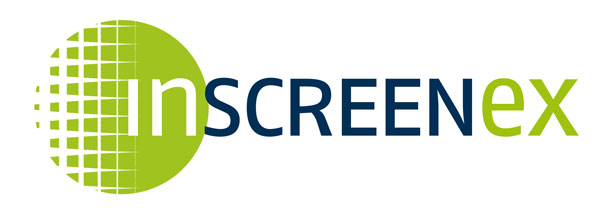 | InSCREENeX GmbH, Braunschweig, Germany |
| Short name: ISX Website: inscreenex.com |  |
ISX is a small enterprise located in Braunschweig-Germany and where it was founded in December 2009 as a spin-off from the Helmholtz Centre for Infection research. The main expertise is the development of novel cell systems for the drug development process. For this purpose, ISX has established 2 complementary technologies (SCREENflex and CI-SCREEN). SCREENflex enables the establishment of stable recombinant cell lines expressing the gene of interest. CI-SCREEN is a proprietary and awarded technology, which enables functional immortalisation of primary cells. It allows the establishment of novel cell lines from any primary cell type and combines the advantages of primary cells with the advantages of cell lines.
| Department: E-Mail: tobias.may@inscreenex.com Website Lab: inscreenex.com | 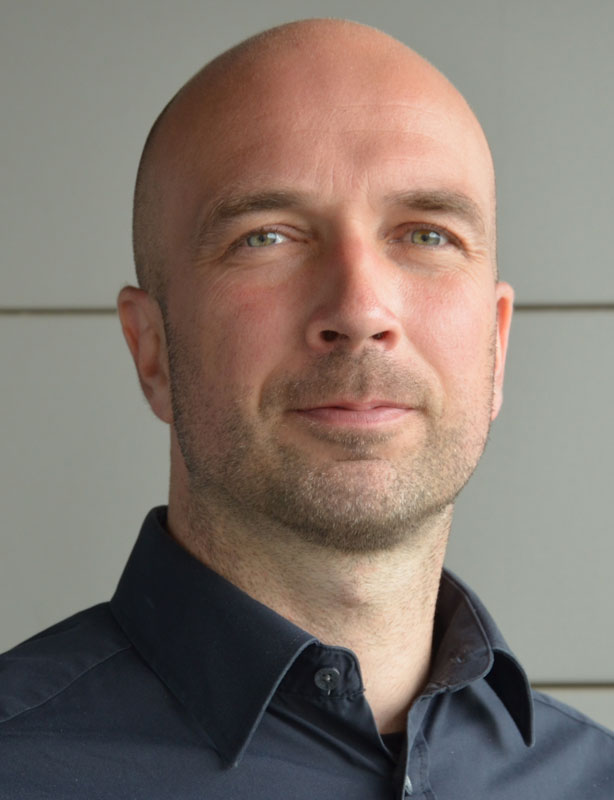 |
 Click for more information
Click for more informationCV
Since 2010: SHAREHOLDER AND CHIEF SCIENTIFIC OFFICER ISX
2008 – 2009: Developing, founding spin-off company (ISX) from the Helmholtz Centre for Infection Research, Germany, together with Dr. Roland Schucht.
2005 – 2007: SCIENTIST / Helmholtz Centre for Infection Research, Germany
2001 – 2005: PhD thesis at Helmholtz Centre for Infection Research, Germany
1996 – 2001: DIPLOMA / MARTIN-LUTHER UNIVERSITY HALLE-WITTENBERG, Germany; Biochemistry
Additional information
2018- Technology Transfer Prize (Braunschweig Chamber of Commerce)
2013- Otto-von-Guericke Prize
2008- Innovation prize of BioRegionen Germany
ELRIG.DE chairman
BioRegioN scientific board
Dechema scientific board of section Medical biotechnology
Keywords
- Primary cell expansion
- In vitro cell cultures
- 3D cell cultures
Key publications
- Lipps C., Klein F., Wahlicht T., Seiffert V., Butueva M., Zauers J., Truschel T., Luckner M., Köster M., MacLeod R., Pezoldt J., Hühn J., Yuan Q., Müller P.P., Kempf H., Zweigerdt R., Dittrich-Breiholz O., Pufe T., Beckmann R., Drescher W., Riancho J., Sañudo C., Korff T., Opalka B., Rebmann V., Göthert J.R., Alves P.M., Ott M., Schucht R., Hauser H., Wirth D., May T. (2018) Expansion of functional personalized cells with specific transgene combinations. Nature Communications 9: 994.
- Kuehn A., Kletting S., de Souza Carvalho-Wodarz C., Repnik U., Griffiths G., Fischer U., Meese E., Huwer H., Wirth D., May T., Schneider-Daum N., Lehr C.M. (2016) Human alveolar epithelial cells expressing tight junctions to model the air-blood barrier. ALTEX 33: 251-260.
- Schwerk J., Köster M., Hauser H., Rohde M., Fulde M., Hornef M.W., May T. (2013) Generation of mouse small intestinal epithelial cell lines that allow the analysis of specific innate immune functions. PLoS One 8: e72700.
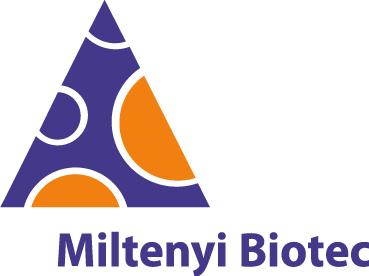 | Miltenyi Biotec B.V. & Co. KG, Bergisch-Gladbach, Germany |
| Short name: Miltenyi Website: www.miltenyibiotec.com |  |
Miltenyi is one of Germany’s most successful biotechnology companies. Since its foundation in 1989 it has grown to more than 3.000 employees worldwide. Our multidisciplinary R&D department consists of 690 scientists, technicians and engineers and is constantly developing novel reagents and instruments for use in immunology, hematology, cell biology and molecular biology. Miltenyi develops, produces and markets more than 15,000 state-of-the-art products and services focusing on sample preparation, cell separation, cell culture, flow cytometry as well as clinical applications in the field of cell therapy.
| Department: R&D Immunotherapy E-Mail: Mario@miltenyi.com Website Lab: www.miltenyibiotec.com | 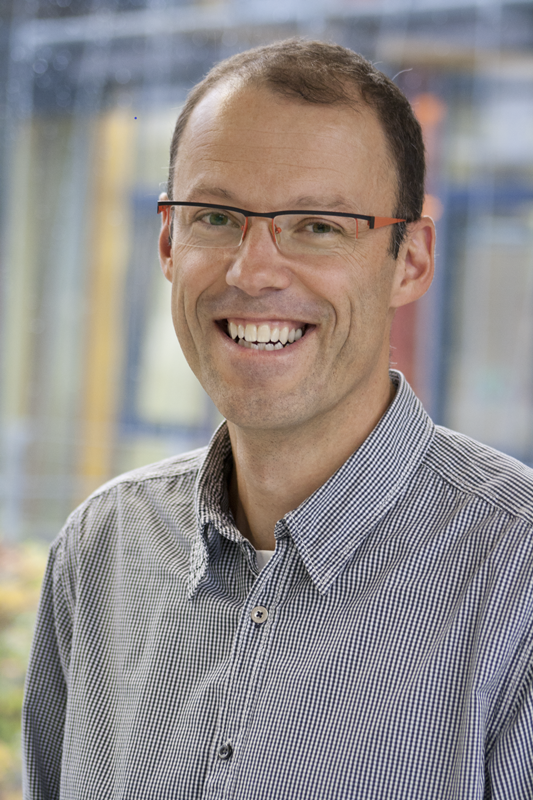 |
 Click for more information
Click for more informationCV
Currently : Head of R&D Immunotherapy at Miltenyi Biotec, Bergisch Gladbach, Germany
Since 1996: R&D at Miltenyi Biotec, Bergisch Gladbach, Germany
1992 – 1996: PhD in Immunology, University of Cologne, Germany
Additional information
Innovative tools for research and translation into clinical application have been an important focus of his team, especially for cellular immunotherapy with T but also NK cells. Preclinical development of cell and gene therapy products, in particular CAR and TCR modified cells.
Keywords
- Immune cell biology, especially T and NK cells
- Immune cell analysis and separation, e.g. antigen-specific T-cells
- Cell and Gene Therapy translation into clinical application for these cell types
Key publications
- Blaeschke F, Stenger D, Kaeuferle T, Willier S, Lotfi R, Kaiser AD, Assenmacher M, Döring M, Feucht J, Feuchtinger T. (2018) Induction of a central memory and stem cell memory phenotype in functionally active CD4+ and CD8+ CAR T cells produced in an automated good manufacturing practice system for the treatment of CD19+ acute lymphoblastic leukemia. Cancer Immunol Immunother 67:1053-1066.
- Lock D, Mockel-Tenbrinck N, Drechsel K, Barth C, Mauer D, Schaser T, Kolbe C, Al Rawashdeh W, Brauner J, Hardt O, Pflug N, Holtick U, Borchmann P, Assenmacher M, Kaiser A. (2017) Automated Manufacturing of Potent CD20-Directed Chimeric Antigen Receptor T Cells for Clinical Use. Hum Gene Ther 28:914-925.
- Bacher P, Heinrich F, Stervbo U, Nienen M, Vahldieck M, Iwert C, Vogt K, Kollet J, Babel N, Sawitzki B, Schwarz C, Bereswill S, Heimesaat MM, Heine G, Gadermaier G, Asam C, Assenmacher M, Kniemeyer O, Brakhage AA, Ferreira F, Wallner M, Worm M, Scheffold A. (2016) Regulatory T Cell Specificity Directs Tolerance versus Allergy against Aeroantigens in Humans. Cell 167:1067-1078.
- Bacher P, Jochheim-Richter A, Mockel-Tenbrink N, Kniemeyer O, Wingenfeld E, Alex R, Ortigao A, Karpova D, Lehrnbecher T, Ullmann AJ, Hamprecht A, Cornely O, Brakhage AA, Assenmacher M, Bonig H, Scheffold A. (2015) Clinical-scale isolation of the total Aspergillus fumigatus-reactive T-helper cell repertoire for adoptive transfer. Cytotherapy 17:1396-405.
- Schmied S, Gostick E, Price DA, Abken H, Assenmacher M, Richter A. (2015) Analysis of the functional WT1-specific T-cell repertoire in healthy donors reveals a discrepancy between CD4+ and CD8+ memory formation. Immunology 145:558-69.


